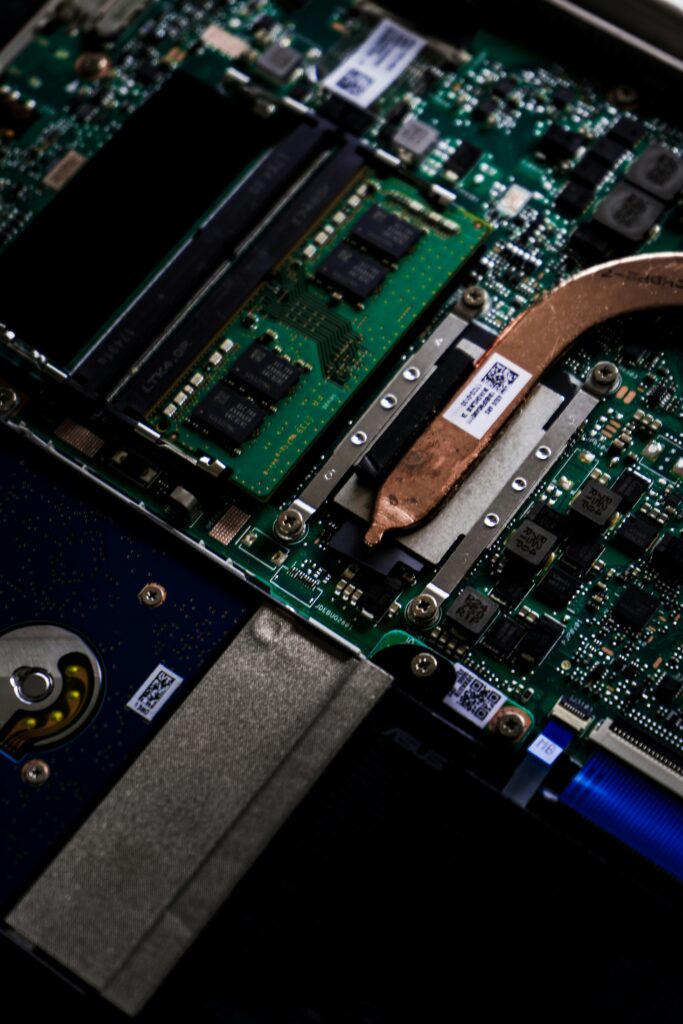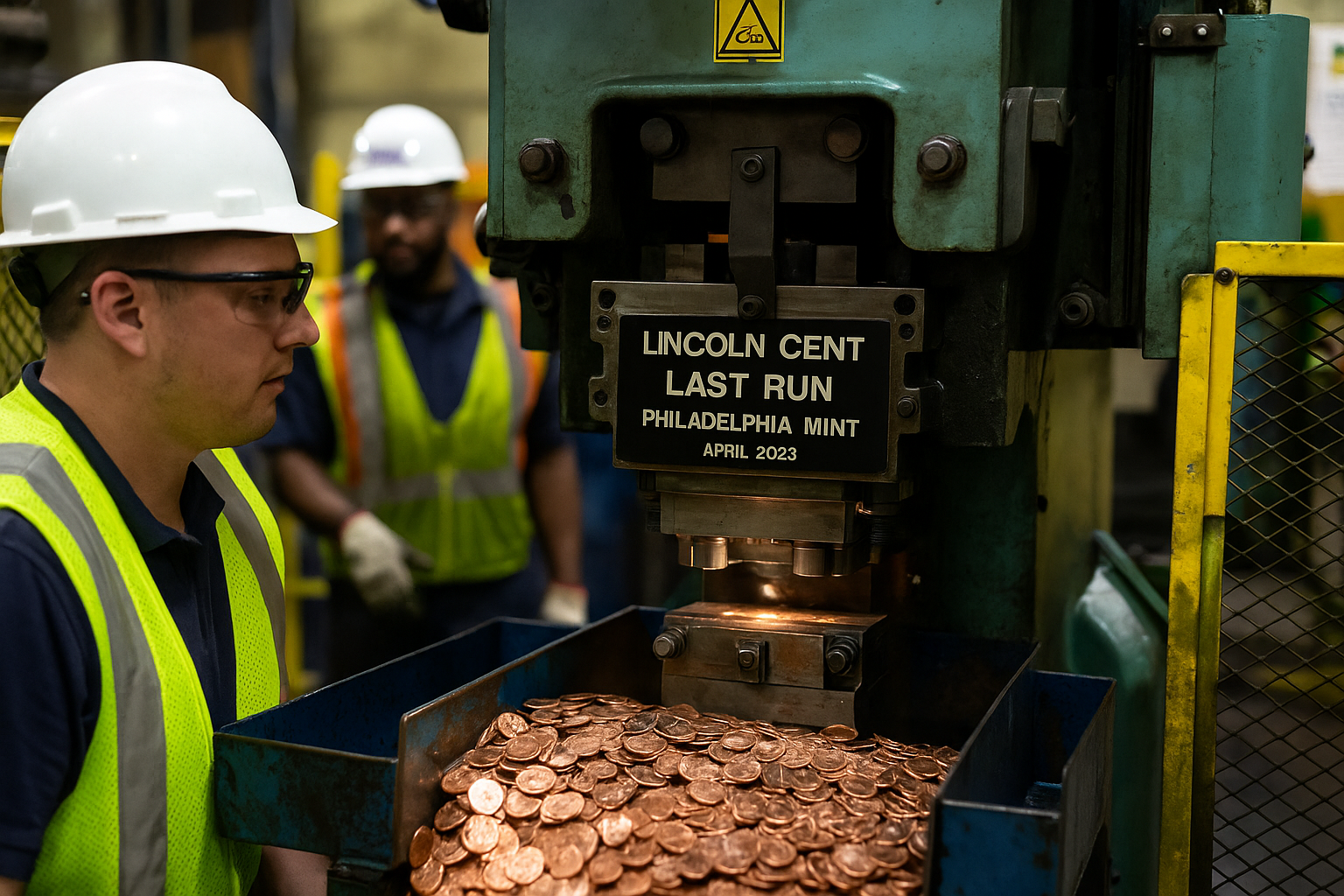UK AI superpower : That is the phrase dominating Westminster and Silicon Roundabout after a wave of headline investment pledges from the world’s biggest technology companies. During U.S. President Donald Trump’s second state visit to Britain on 16–17 September 2025, London and Washington unveiled a “Tech Prosperity Deal” that UK ministers say could turbocharge growth, build sovereign computing power and position Britain as an UK AI superpower within five years. The centrepiece: Microsoft’s announcement of a $30bn (£22bn) UK package and Nvidia’s plan to deploy up to 120,000 AI chips across the country—moves paired with Google’s £5bn expansion and a new OpenAI-led “Stargate UK” compute initiative. Reuters

What’s on the table—and why it matters
At its core, the Tech Prosperity Deal is a bundle of large company-led projects encouraged by government. Microsoft’s commitment—its largest outside the U.S.—will fund cloud and AI infrastructure build-outs, including a flagship supercomputer in Loughton, Essex, developed with UK infrastructure firm Nscale and powered by Nvidia GPUs. Nvidia, for its part, frames its UK effort as Europe’s largest rollout yet, with as many as 120,000 chips slated for British sites. Google is adding a £5bn UK data-centre and research push, while a cluster of U.S. firms—from AWS and Oracle to Salesforce and CoreWeave—are layering on billions more. Each element is pitched as fuel for productivity, scientific research and “sovereign” compute. Reuters
Nvidia co-founder Jensen Huang went further, declaring “this is the week that I declare the UK AI superpower,” coupling rhetoric with a new £500m equity stake in Nscale and an £11bn “end-to-end” economic contribution pegged to hardware, data-centre build and supporting infrastructure. His argument: the UK has the talent and research depth; what it needs is scale compute and energy to match. The Guardian+1
Who’s investing, where—and with what kit
Microsoft (≈£22bn/$30bn, 2025–2028). Half capex, half operations, according to company briefings, with a signature project at Nscale’s Loughton campus that UK officials say will be the country’s largest AI supercomputer. Early designs point to more than 23,000 Nvidia GPUs on site—an Azure-integrated system designed to serve both public and private workloads. Reuters+2Datacenter Dynamics+2
Nvidia (≈£11bn end-to-end; up to 120,000 GPUs). Beyond supplying the Loughton machine, Nvidia says its UK rollout will dwarf previous European deployments. The company’s press-facing numbers bundle chips, networking, land and build costs borne across partners—an accounting method critics will parse, but one that reflects the full stack needed to run frontier AI. The Guardian
Google (£5bn). Alphabet’s plan includes a new data centre in Waltham Cross, north of London, and ongoing funding for DeepMind research. Reuters
OpenAI, Nvidia & Nscale—Stargate UK. OpenAI’s “sovereign compute” initiative for Britain will stand up local capacity at multiple Nscale sites, with an initial tranche of ~8,000 GPUs and headroom to expand to tens of thousands. The aim is to run sensitive workloads domestically—finance, national security, health—without routing through overseas facilities. The Guardian+2Datacenter Dynamics+2
CoreWeave & others. GPU cloud specialist CoreWeave is adding £1.5bn more in the UK (bringing its total to £2.5bn), while Salesforce, Oracle and AWS trailed additional spend lines across data centres and services. UK AI superpower ambitions, in other words, are being fed by a broadening vendor ecosystem. Reuters

The geography of Britain’s new compute spine
Essex (Loughton): The showpiece supercomputer, to be delivered with Nscale and Microsoft, anchors the southeast leg of the build. Designs reference a facility scaling from 50MW toward 90MW, initially housing roughly 23,040 next-gen Nvidia GB300 GPUs, with first big tranches arriving as early as 2027—timelines that underscore the multi-year nature of the spend. Nscale
North-east England (the new “AI Growth Zone”): The second leg, in and around Cobalt Park in North Tyneside and Blyth in Northumberland, is being set up as a simplified-planning, energy-priority area for compute campuses. Stargate UK will place OpenAI capacity here in phase one, and the region is being marketed for “more than 5,000 jobs” as ancillary suppliers land nearby. The government’s pitch: a visible, levelling-up-aligned pillar of the UK AI superpower strategy outside London. The Guardian
The economic case: big cheques, bigger expectations
Satya Nadella’s core claim is simple: this wave could compress a decade of digital productivity gains into five years if AI diffuses into the real economy—healthcare, public services, SMEs. Economists will ask the same questions they asked about the 1990s PC boom: will capital translate to measurable total factor productivity, or simply to higher tech sector valuations? For ministers, the bet is that compute scarcity has become the new bottleneck; solve it, and UK AI superpower outcomes—faster drug discovery, digital public services, export-grade AI startups—come within reach. Reuters
The energy elephant in the server room
All the hype runs on watts. Data centres are voracious, and Britain’s grid is already tight. Huang’s own caveat: to realise an UK AI superpower, the UK must quickly add clean baseload (nuclear) and, in the short term, more gas-turbine peakers—some potentially “off-grid”—while AI itself helps optimise future turbines and renewables. That’s both a provocation and a political hand-grenade. The Guardian
Campaigners such as Foxglove warn that households could “end up footing the bill for the colossal amounts of power the giants need” via network upgrades, energy mix changes and planning shortcuts. Similar concerns are erupting across Europe and the U.S. as AI campuses proliferate: who pays for grid reinforcement, water for cooling, and transmission corridors? Foxglove has already filed a legal challenge aimed at reining in hyperscale developments that, it argues, threaten bills and the environment. Those arguments will shadow—and likely slow—parts of the rollout. Data Centre Magazine+1
What the deal does—and doesn’t—change on policy
The Reuters read-out notes what the pact does not include: despite U.S. gripes with European digital taxes, the UK’s Digital Services Tax and similar measures were not part of the discussions; nor were broader online-safety style rules. That leaves tech policy—and revenue questions—untouched for now, even as the UK AI superpower plan leans on U.S. vendors. Reuters
Copyright is the other flashpoint. Artists and publishers want hard guarantees; AI builders want flexible, innovation-friendly frameworks. Nvidia’s Huang, conspicuously, nodded toward “the right for creators to monetise their work”—signalling where chipmakers think the politics is headed, even as law and licensing norms lag. Expect this to remain a negotiating trench for any UK AI superpower trying to lead and placate creative industries at once. The Guardian
Will this really make Britain an UK AI superpower?
The bullish case
- Sovereign compute becomes real: Stargate UK and Loughton give British researchers, startups and sensitive-sector users access to domestic, frontier-grade capacity, shortening queues and reducing latency for regulated work. The Guardian+1
- Capital concentration: By bundling £31bn of commitments into a single narrative, ministers invite second-wave investors—colocation, silicon supply, chip packaging, specialist cooling—to co-locate. Reuters
- Talent flywheel: DeepMind, Wayve and a dense university network already seed top-tier AI talent; compute and capital lure alumni to stay, found and scale in the UK. The Guardian
The sceptical case
- Time-to-impact: Much of the spend lands over 2026–2028; economic gains lag deployment. The Loughton system’s first full racks won’t hum until 2027, and industry GPU supply remains constrained. Nscale
- Sovereignty, but on U.S. rails: Even “sovereign” compute is being delivered largely by U.S. firms. Critics like Nick Clegg have blasted the deal as “sloppy seconds from Silicon Valley,” warning of technological dependency. The Guardian
- Energy & water constraints: Without rapid nuclear build-outs, grid reinforcement and cooling innovations, the UK AI superpower machine could stall or drive up bills. The Guardian
How Britain could turn pledges into outcomes
1) Lock in grids and gigawatts. Pair each major data-centre approval with a ring-fenced energy plan: dedicated transmission capacity, long-term power purchase agreements, and—where viable—small modular reactors co-siting. Absent that, an UK AI superpower becomes an “AI brownout.” The Guardian
2) Make “sovereign” real. Use the OpenAI/Nvidia/Nscale stack to stand up government-grade instances that never leave UK jurisdiction, with clear security accreditation. Tie Research Council grants to domestic compute use where possible. OpenAI
3) Spread the spillovers. Earmark slices of Loughton and Stargate UK for SMEs and universities at subsidised rates, using Ofcom-style access obligations so “sovereign compute” isn’t just for giants. The Guardian
4) Fix planning friction without gutting scrutiny. The “AI Growth Zone” can speed approvals, but codify noise, traffic, biodiversity and water-use standards to reduce back-end litigation—Foxglove’s court moves show how exposed fast-track projects are. Foxglove
5) Match capital with skills. Scale apprenticeship pathways in power systems, thermal engineering and data-centre operations. A true UK AI superpower needs as many electricians and pipefitters as PhDs.
Inside the numbers: what “120,000 GPUs” really implies
In raw terms, 120,000 top-tier Nvidia GPUs—spread across multiple campuses and clouds—can deliver orders of magnitude more training and inference throughput than anything currently on British soil. Nvidia has suggested the combined compute could approach “~100x” today’s top UK supercomputer performance. Industry watchers will scrutinise the actual split between training-class chips, networking fabric and memory—because peak performance depends on I/O as much as FLOPs. Still, if half of the announced fleet lands by 2027, British AI labs would leapfrog many continental peers on capacity. The Guardian
Jobs: hard counts and realistic ranges
Government language—“potential for more than 5,000 jobs” in the North-east alone—sounds impressive, and some of that will be durable: data-centre techs, network engineers, security, facilities managers. But most jobs cluster in build phases and sprawl across supply chains (steel, electrical, civils). A sober model sets expectations: each 30–50MW campus employs a few hundred permanently; the bigger wins come if UK AI superpower compute catalyses new AI product firms, export-grade SaaS, and Industrial Strategy-aligned spinouts. The Guardian
The politics around the pact
Prime Minister Sir Keir Starmer is using the deal to signal a “light-touch, pro-investment” posture versus the EU’s more prescriptive digital rule-sets. For the White House, the optics are equally potent: a state visit framed by AI and nuclear cooperation, not trade spats. Reuters also notes that U.S. complaints about digital taxes were not folded into the pact—no reprieve for the UK’s Digital Services Tax, at least not yet. That leaves both capitals room for future fights even as they celebrate alignment. Reuters
Risk ledger: bubbles, booms—and build discipline
Nadella calls AI “booms and busts and bubbles”—and he’s right. The risk for Britain is to conflate vendor CAPEX announcements with GDP-line progress. The way through is delivery discipline:
- publish a public compute map—sites, MW, GPUs online vs. planned
- hard-gate each campus with energy and water plans
- publish queue times and utilisation for public-interest workloads
- track “spillover metrics”: SME uptake, university grants consuming domestic compute, export revenue from AI-enabled sectors
Do that, and the UK AI superpower story gains credibility beyond press conferences.
Timelines and milestones to watch (2025–2028)
- Q3 2025: Pact signed; Nvidia confirms up to 120k UK GPUs; Google’s £5bn plan public; Stargate UK announced. Reuters+1
- 2026: First wave of North-east planning decisions; grid-connection work accelerates.
- Q1 2027: Loughton’s initial 23,040-GPU tranche due, if supply chains hold. Nscale
- 2027–2028: Second-phase ramps at Cobalt Park and satellite sites; OpenAI expands instance sizes toward 31k GPUs; academic and NHS pilots publish outcome studies. Datacenter Dynamics
Frequently asked questions
Does “£31bn” arrive as cash tomorrow? No. It’s a composite of multi-year capex and operating budgets, some contingent on planning and grid access. Microsoft’s £22bn spans infrastructure and operations; Nvidia’s £11bn figure rolls up partner spend. UK AI superpower economics show up over years, not quarters. Reuters+1
Is this truly “sovereign”? Partly. Stargate UK and Loughton ensure sensitive workloads can run in-country, but much of the stack remains American-made and operated by U.S. firms. That’s why critics warn of dependency even as ministers tout resilience. The Guardian
What about water, heat and neighbourhood impact? Expect liquid-cooling, heat-reuse hooks into district networks, and stricter run-off controls. The “AI Growth Zone” promises faster approvals—but legal challenges aim to keep environmental checks robust. UK AI superpower must mean sustainable power, not just raw power. The Guardian+1
Will Google’s new site be in London? Reuters points to Waltham Cross, just north of London, as part of Alphabet’s £5bn package. Reuters
Bottom line
A country becomes an UK AI superpower by aligning three things: world-class talent, abundant sovereign compute, and affordable, low-carbon energy. Britain already boasts the first. The new deal pours money into the second. The third will decide whether this moment becomes a growth flywheel—or an expensive stall. If ministers can square energy supply with community buy-in and if companies deliver more servers than slide decks, the UK can parlay Big Tech’s cheques into lasting national capacity. If not, the hangover from today’s jaw-dropping promises could be fierce.
Either way, one result is clear: UK AI policy is no longer about pilots and press releases. It’s about cranes on sites, transformers in substations, and GPUs wired into racks—about turning a volatile boom into durable value the public can feel. That’s the test the UK AI superpower project now faces.
Cited reporting & primary sources:
Key facts in this article are grounded in on-the-record reporting and official statements, including Microsoft’s £22bn UK package, Nvidia’s up-to-120,000 GPU plan, Google’s £5bn expansion, Stargate UK’s scope and the AI Growth Zone announcements, as well as policy carve-outs noted by Reuters. OpenAI+4Reuters+4The Guardian+4
UK AI superpower. That is the phrase dominating Westminster and Silicon Roundabout after a wave of headline investment pledges from the world’s biggest technology companies. During U.S. President Donald Trump’s second state visit to Britain on 16–17 September 2025, London and Washington unveiled a “Tech Prosperity Deal” that UK ministers say could turbocharge growth, build sovereign computing power and position Britain as an UK AI superpower within five years. The centrepiece: Microsoft’s announcement of a $30bn (£22bn) UK package and Nvidia’s plan to deploy up to 120,000 AI chips across the country—moves paired with Google’s £5bn expansion and a new OpenAI-led “Stargate UK” compute initiative. Reuters
What’s on the table—and why it matters
At its core, the Tech Prosperity Deal is a bundle of large company-led projects encouraged by government. Microsoft’s commitment—its largest outside the U.S.—will fund cloud and AI infrastructure build-outs, including a flagship supercomputer in Loughton, Essex, developed with UK infrastructure firm Nscale and powered by Nvidia GPUs. Nvidia, for its part, frames its UK effort as Europe’s largest rollout yet, with as many as 120,000 chips slated for British sites. Google is adding a £5bn UK data-centre and research push, while a cluster of U.S. firms—from AWS and Oracle to Salesforce and CoreWeave—are layering on billions more. Each element is pitched as fuel for productivity, scientific research and “sovereign” compute. Reuters
Nvidia co-founder Jensen Huang went further, declaring “this is the week that I declare the UK AI superpower,” coupling rhetoric with a new £500m equity stake in Nscale and an £11bn “end-to-end” economic contribution pegged to hardware, data-centre build and supporting infrastructure. His argument: the UK has the talent and research depth; what it needs is scale compute and energy to match. The Guardian+1
Who’s investing, where—and with what kit
Microsoft (≈£22bn/$30bn, 2025–2028). Half capex, half operations, according to company briefings, with a signature project at Nscale’s Loughton campus that UK officials say will be the country’s largest AI supercomputer. Early designs point to more than 23,000 Nvidia GPUs on site—an Azure-integrated system designed to serve both public and private workloads. Reuters+2Datacenter Dynamics+2
Nvidia (≈£11bn end-to-end; up to 120,000 GPUs). Beyond supplying the Loughton machine, Nvidia says its UK rollout will dwarf previous European deployments. The company’s press-facing numbers bundle chips, networking, land and build costs borne across partners—an accounting method critics will parse, but one that reflects the full stack needed to run frontier AI. The Guardian
Google (£5bn). Alphabet’s plan includes a new data centre in Waltham Cross, north of London, and ongoing funding for DeepMind research. Reuters
OpenAI, Nvidia & Nscale—Stargate UK. OpenAI’s “sovereign compute” initiative for Britain will stand up local capacity at multiple Nscale sites, with an initial tranche of ~8,000 GPUs and headroom to expand to tens of thousands. The aim is to run sensitive workloads domestically—finance, national security, health—without routing through overseas facilities. The Guardian+2Datacenter Dynamics+2
CoreWeave & others. GPU cloud specialist CoreWeave is adding £1.5bn more in the UK (bringing its total to £2.5bn), while Salesforce, Oracle and AWS trailed additional spend lines across data centres and services. UK AI superpower ambitions, in other words, are being fed by a broadening vendor ecosystem. Reuters
The geography of Britain’s new compute spine
Essex (Loughton): The showpiece supercomputer, to be delivered with Nscale and Microsoft, anchors the southeast leg of the build. Designs reference a facility scaling from 50MW toward 90MW, initially housing roughly 23,040 next-gen Nvidia GB300 GPUs, with first big tranches arriving as early as 2027—timelines that underscore the multi-year nature of the spend. Nscale
North-east England (the new “AI Growth Zone”): The second leg, in and around Cobalt Park in North Tyneside and Blyth in Northumberland, is being set up as a simplified-planning, energy-priority area for compute campuses. Stargate UK will place OpenAI capacity here in phase one, and the region is being marketed for “more than 5,000 jobs” as ancillary suppliers land nearby. The government’s pitch: a visible, levelling-up-aligned pillar of the UK AI superpower strategy outside London. The Guardian
The economic case: big cheques, bigger expectations
Satya Nadella’s core claim is simple: this wave could compress a decade of digital productivity gains into five years if AI diffuses into the real economy—healthcare, public services, SMEs. Economists will ask the same questions they asked about the 1990s PC boom: will capital translate to measurable total factor productivity, or simply to higher tech sector valuations? For ministers, the bet is that compute scarcity has become the new bottleneck; solve it, and UK AI superpower outcomes—faster drug discovery, digital public services, export-grade AI startups—come within reach. Reuters
The energy elephant in the server room
All the hype runs on watts. Data centres are voracious, and Britain’s grid is already tight. Huang’s own caveat: to realise an UK AI superpower, the UK must quickly add clean baseload (nuclear) and, in the short term, more gas-turbine peakers—some potentially “off-grid”—while AI itself helps optimise future turbines and renewables. That’s both a provocation and a political hand-grenade. The Guardian
Campaigners such as Foxglove warn that households could “end up footing the bill for the colossal amounts of power the giants need” via network upgrades, energy mix changes and planning shortcuts. Similar concerns are erupting across Europe and the U.S. as AI campuses proliferate: who pays for grid reinforcement, water for cooling, and transmission corridors? Foxglove has already filed a legal challenge aimed at reining in hyperscale developments that, it argues, threaten bills and the environment. Those arguments will shadow—and likely slow—parts of the rollout. Data Centre Magazine+1
What the deal does—and doesn’t—change on policy
The Reuters read-out notes what the pact does not include: despite U.S. gripes with European digital taxes, the UK’s Digital Services Tax and similar measures were not part of the discussions; nor were broader online-safety style rules. That leaves tech policy—and revenue questions—untouched for now, even as the UK AI superpower plan leans on U.S. vendors. Reuters
Copyright is the other flashpoint. Artists and publishers want hard guarantees; AI builders want flexible, innovation-friendly frameworks. Nvidia’s Huang, conspicuously, nodded toward “the right for creators to monetise their work”—signalling where chipmakers think the politics is headed, even as law and licensing norms lag. Expect this to remain a negotiating trench for any UK AI superpower trying to lead and placate creative industries at once. The Guardian
Will this really make Britain an UK AI superpower?
The bullish case
- Sovereign compute becomes real: Stargate UK and Loughton give British researchers, startups and sensitive-sector users access to domestic, frontier-grade capacity, shortening queues and reducing latency for regulated work. The Guardian+1
- Capital concentration: By bundling £31bn of commitments into a single narrative, ministers invite second-wave investors—colocation, silicon supply, chip packaging, specialist cooling—to co-locate. Reuters
- Talent flywheel: DeepMind, Wayve and a dense university network already seed top-tier AI talent; compute and capital lure alumni to stay, found and scale in the UK. The Guardian
The sceptical case
- Time-to-impact: Much of the spend lands over 2026–2028; economic gains lag deployment. The Loughton system’s first full racks won’t hum until 2027, and industry GPU supply remains constrained. Nscale
- Sovereignty, but on U.S. rails: Even “sovereign” compute is being delivered largely by U.S. firms. Critics like Nick Clegg have blasted the deal as “sloppy seconds from Silicon Valley,” warning of technological dependency. The Guardian
- Energy & water constraints: Without rapid nuclear build-outs, grid reinforcement and cooling innovations, the UK AI superpower machine could stall or drive up bills. The Guardian
How Britain could turn pledges into outcomes
1) Lock in grids and gigawatts. Pair each major data-centre approval with a ring-fenced energy plan: dedicated transmission capacity, long-term power purchase agreements, and—where viable—small modular reactors co-siting. Absent that, an UK AI superpower becomes an “AI brownout.” The Guardian
2) Make “sovereign” real. Use the OpenAI/Nvidia/Nscale stack to stand up government-grade instances that never leave UK jurisdiction, with clear security accreditation. Tie Research Council grants to domestic compute use where possible. OpenAI
3) Spread the spillovers. Earmark slices of Loughton and Stargate UK for SMEs and universities at subsidised rates, using Ofcom-style access obligations so “sovereign compute” isn’t just for giants. The Guardian
4) Fix planning friction without gutting scrutiny. The “AI Growth Zone” can speed approvals, but codify noise, traffic, biodiversity and water-use standards to reduce back-end litigation—Foxglove’s court moves show how exposed fast-track projects are. Foxglove
5) Match capital with skills. Scale apprenticeship pathways in power systems, thermal engineering and data-centre operations. A true UK AI superpower needs as many electricians and pipefitters as PhDs.
Inside the numbers: what “120,000 GPUs” really implies
In raw terms, 120,000 top-tier Nvidia GPUs—spread across multiple campuses and clouds—can deliver orders of magnitude more training and inference throughput than anything currently on British soil. Nvidia has suggested the combined compute could approach “~100x” today’s top UK supercomputer performance. Industry watchers will scrutinise the actual split between training-class chips, networking fabric and memory—because peak performance depends on I/O as much as FLOPs. Still, if half of the announced fleet lands by 2027, British AI labs would leapfrog many continental peers on capacity. The Guardian
Jobs: hard counts and realistic ranges
Government language—“potential for more than 5,000 jobs” in the North-east alone—sounds impressive, and some of that will be durable: data-centre techs, network engineers, security, facilities managers. But most jobs cluster in build phases and sprawl across supply chains (steel, electrical, civils). A sober model sets expectations: each 30–50MW campus employs a few hundred permanently; the bigger wins come if UK AI superpower compute catalyses new AI product firms, export-grade SaaS, and Industrial Strategy-aligned spinouts. The Guardian
The politics around the pact
Prime Minister Sir Keir Starmer is using the deal to signal a “light-touch, pro-investment” posture versus the EU’s more prescriptive digital rule-sets. For the White House, the optics are equally potent: a state visit framed by AI and nuclear cooperation, not trade spats. Reuters also notes that U.S. complaints about digital taxes were not folded into the pact—no reprieve for the UK’s Digital Services Tax, at least not yet. That leaves both capitals room for future fights even as they celebrate alignment. Reuters
Risk ledger: bubbles, booms—and build discipline
Nadella calls AI “booms and busts and bubbles”—and he’s right. The risk for Britain is to conflate vendor CAPEX announcements with GDP-line progress. The way through is delivery discipline:
- publish a public compute map—sites, MW, GPUs online vs. planned
- hard-gate each campus with energy and water plans
- publish queue times and utilisation for public-interest workloads
- track “spillover metrics”: SME uptake, university grants consuming domestic compute, export revenue from AI-enabled sectors
Do that, and the UK AI superpower story gains credibility beyond press conferences.
Timelines and milestones to watch (2025–2028)
- Q3 2025: Pact signed; Nvidia confirms up to 120k UK GPUs; Google’s £5bn plan public; Stargate UK announced. Reuters+1
- 2026: First wave of North-east planning decisions; grid-connection work accelerates.
- Q1 2027: Loughton’s initial 23,040-GPU tranche due, if supply chains hold. Nscale
- 2027–2028: Second-phase ramps at Cobalt Park and satellite sites; OpenAI expands instance sizes toward 31k GPUs; academic and NHS pilots publish outcome studies. Datacenter Dynamics
Frequently asked questions
Does “£31bn” arrive as cash tomorrow? No. It’s a composite of multi-year capex and operating budgets, some contingent on planning and grid access. Microsoft’s £22bn spans infrastructure and operations; Nvidia’s £11bn figure rolls up partner spend. UK AI superpower economics show up over years, not quarters. Reuters+1
Is this truly “sovereign”? Partly. Stargate UK and Loughton ensure sensitive workloads can run in-country, but much of the stack remains American-made and operated by U.S. firms. That’s why critics warn of dependency even as ministers tout resilience. The Guardian
What about water, heat and neighbourhood impact? Expect liquid-cooling, heat-reuse hooks into district networks, and stricter run-off controls. The “AI Growth Zone” promises faster approvals—but legal challenges aim to keep environmental checks robust. UK AI superpower must mean sustainable power, not just raw power. The Guardian+1
Will Google’s new site be in London? Reuters points to Waltham Cross, just north of London, as part of Alphabet’s £5bn package. Reuters
Bottom line
A country becomes an UK AI superpower by aligning three things: world-class talent, abundant sovereign compute, and affordable, low-carbon energy. Britain already boasts the first. The new deal pours money into the second. The third will decide whether this moment becomes a growth flywheel—or an expensive stall. If ministers can square energy supply with community buy-in and if companies deliver more servers than slide decks, the UK can parlay Big Tech’s cheques into lasting national capacity. If not, the hangover from today’s jaw-dropping promises could be fierce.
Either way, one result is clear: UK AI policy is no longer about pilots and press releases. It’s about cranes on sites, transformers in substations, and GPUs wired into racks—about turning a volatile boom into durable value the public can feel. That’s the test the UK AI superpower project now faces.
Cited reporting & primary sources:
Key facts in this article are grounded in on-the-record reporting and official statements, including Microsoft’s £22bn UK package, Nvidia’s up-to-120,000 GPU plan, Google’s £5bn expansion, Stargate UK’s scope and the AI Growth Zone announcements, as well as policy carve-outs noted by Reuters. OpenAI+4Reuters+4The Guardian+4


